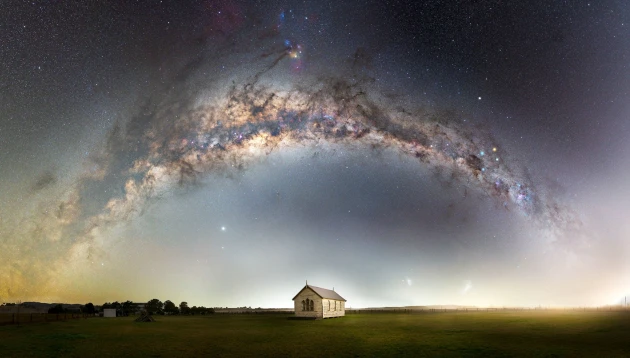
Stargazing Australia is a once-in-a-lifetime experience. With vast open spaces, low light pollution, and southern skies, Australia is among the world’s top night-sky destinations. Whether you’re hoping to catch a glimpse of the Milky Way, gaze at constellations unique to the Southern Hemisphere, or simply enjoy a night under the stars, stargazing in Australia offers unforgettable experiences. From remote deserts to lush mountains, here are the best places to enjoy the night sky in 2025.
Table of Contents
- Warrumbungle National Park – Stargazing Australia Hotspot
- Uluru & Kata Tjuta National Park: Stargazing in the Red Centre
- Arkaroola Wilderness Sanctuary – Remote Stargazing Australia
- Kati Thanda–Lake Eyre National Park, South Australia
- Margaret River Region, Western Australia
- Cradle Mountain–Lake St Clair National Park, Tasmania
- Why Choose Australia for Stargazing
- Related Reading
- FAQ
Warrumbungle National Park – Best Stargazing Australia Destination
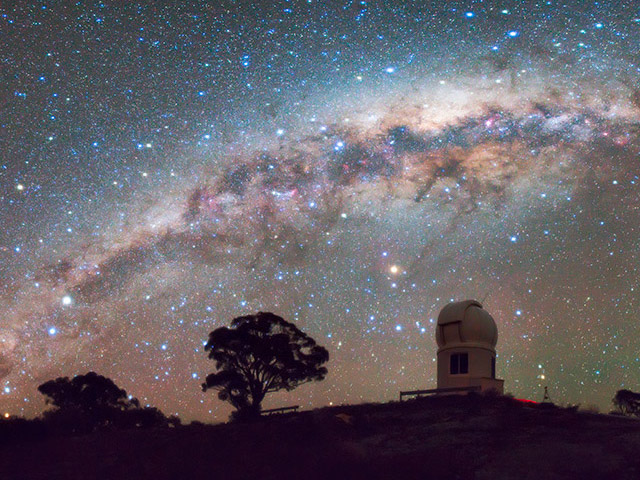
Recognized as Australia’s first Dark Sky Park, Warrumbungle National Park is a dream come true for astronomy lovers. Located in northwestern New South Wales, the park boasts minimal artificial light and panoramic skies. The nearby Siding Spring Observatory adds to the scientific appeal of this stargazing Australia hotspot.
Camping under the stars here is a magical experience. Bring a telescope or simply lie back and watch the heavens unfold. The Milky Way appears stunningly bright, and clear weather conditions are consistent throughout most of the year. If you’re serious about stargazing in Australia, Warrumbungle is a must-visit.
Uluru & Kata Tjuta National Park: Iconic Stargazing in Australia
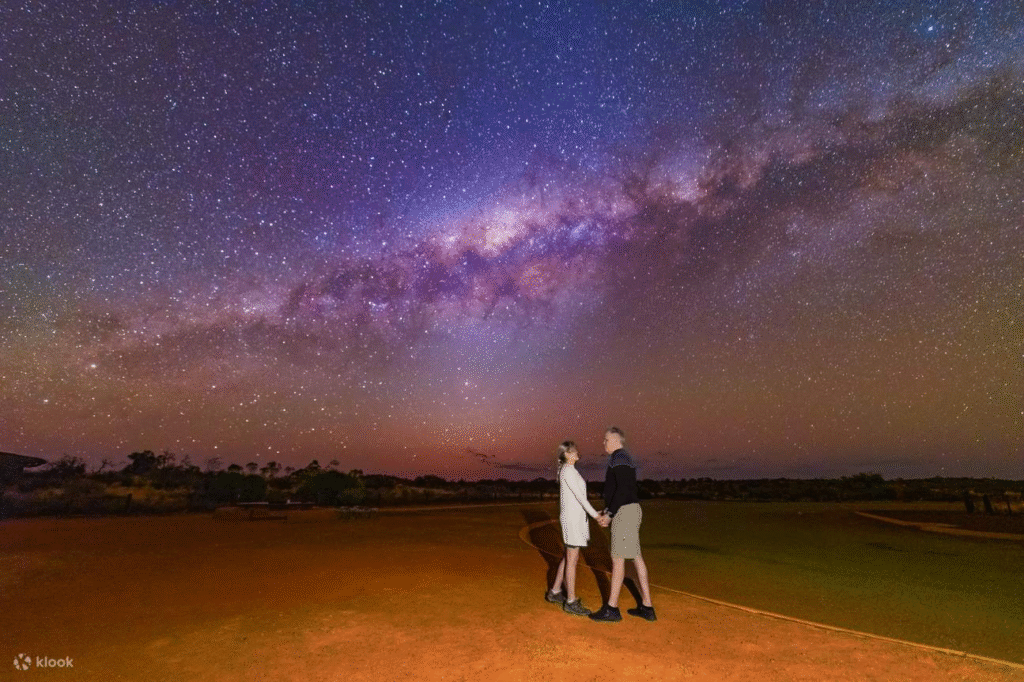
The Red Centre offers more than breathtaking desert landscapes and sacred Indigenous landmarks—it’s also one of the top regions for stargazing Australia. Far from any major cities, the skies above Uluru are incredibly dark and unspoiled.
One of the most spectacular sights is the Galactic Core of the Milky Way rising over the iconic rock formations. Several tour operators offer astronomy experiences, combining Indigenous sky stories with telescopic views of nebulae, planets, and star clusters. Stargazing in Australia doesn’t get more iconic than this.
Arkaroola Wilderness Sanctuary – Remote Stargazing in Australia
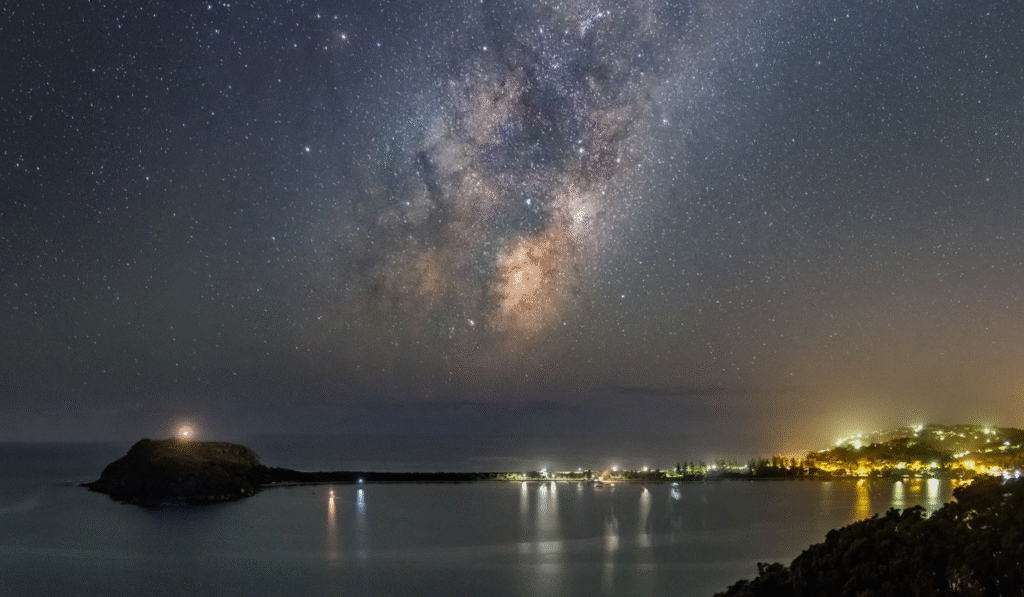
Located deep in the Flinders Ranges, Arkaroola is a privately owned wilderness sanctuary that offers one of the best remote stargazing Australia environments. Its mountainous terrain and arid climate provide crystal-clear conditions for viewing the night sky.
This location is home to professional-grade observatories, and guided stargazing tours are available year-round. The sanctuary is also committed to preserving its dark skies, ensuring low light pollution for future generations. Whether you’re an amateur or professional astronomer, Arkaroola is a stargazing in Australia paradise.
Kati Thanda–Lake Eyre National Park, South Australia
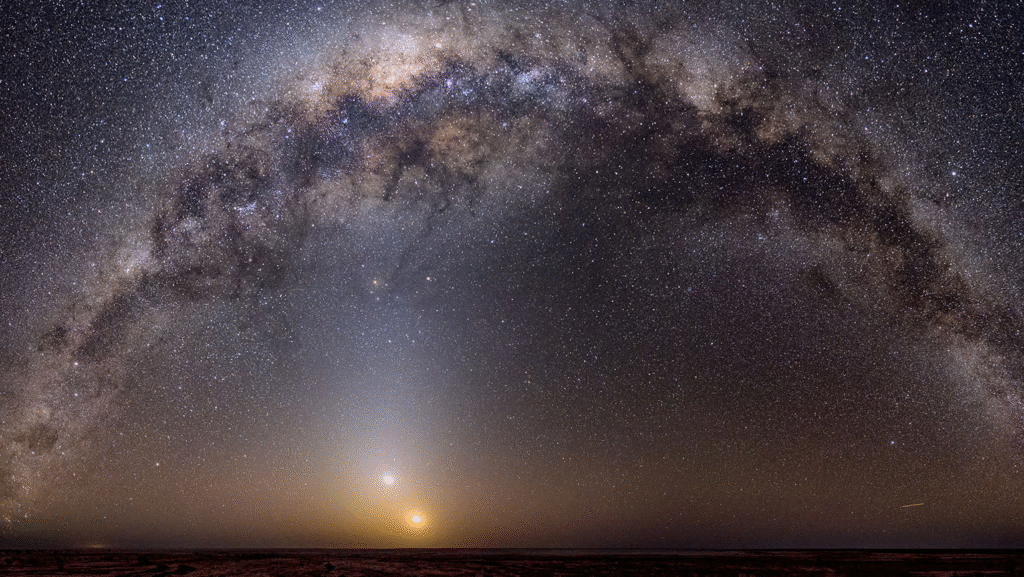
Kati Thanda–Lake Eyre National Park is one of Australia’s most remote and extraordinary landscapes. Located in South Australia’s outback, the vast salt lake and surrounding desert plains create a surreal, otherworldly atmosphere. At night, this stark landscape becomes one of the most dramatic settings for stargazing in Australia.
The absence of nearby towns means zero light pollution, offering unmatched views of the Milky Way and constellations such as the Southern Cross and Scorpio. In winter, when the skies are clearest, the visibility extends for miles in all directions. The silence of the desert at night enhances the feeling of being alone with the universe.
For those who are planning a visit, camping near the lake (with permits) provides the most immersive experience. It’s recommended to bring your own stargazing gear, though even without a telescope, the sky here is a show in itself. The shifting colors of the desert at dusk transition smoothly into a star-studded dome overhead.
Astrophotographers often flock to Lake Eyre for its combination of reflective salt flats and low humidity, which allows for incredibly crisp long-exposure shots. If you’re lucky, you might witness meteors streaking across the horizon or even catch a satellite moving silently across the heavens.
In 2025, with solar activity expected to increase, auroral events (aurora australis) could potentially be visible from South Australia’s interior, adding yet another reason to consider this site. Ultimately, few places in the world offer such an expansive, uninterrupted view of the night sky. Kati Thanda–Lake Eyre is not only visually stunning but spiritually humbling—a perfect place to reconnect with the cosmos.
Margaret River Region, Western Australia
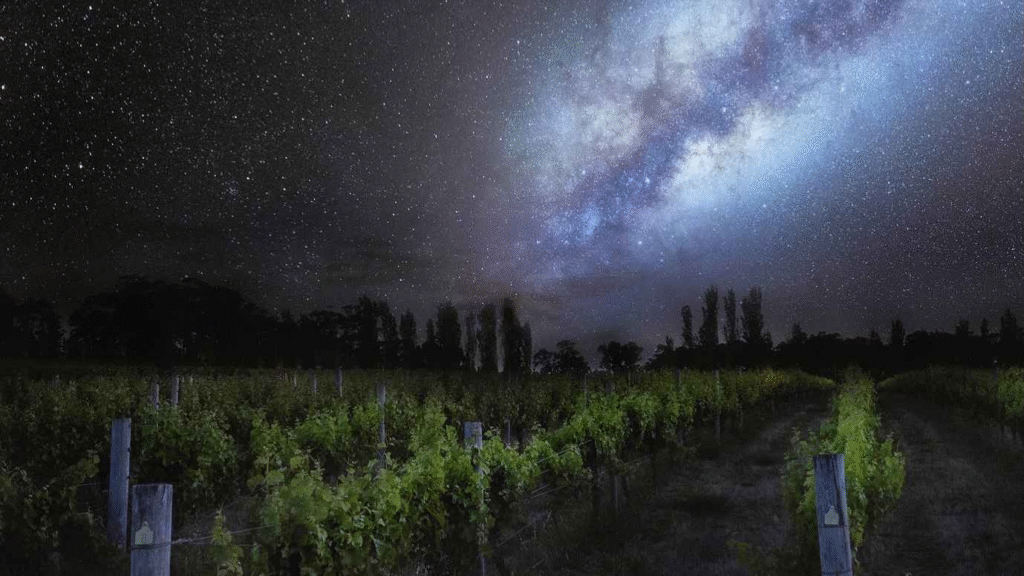
Famous for its wineries and coastal beauty, the Margaret River region is also a hidden gem for stargazing Australia. With several quiet inland campsites and dark-sky pockets, you’ll find plenty of spots to escape the lights and soak up the stars.
Some eco-retreats even offer astronomy nights with local guides and telescopes. Pair this with a glass of world-class wine, and you’ve got a perfect evening under the stars enjoying stargazing in Australia.
Cradle Mountain–Lake St Clair National Park, Tasmania
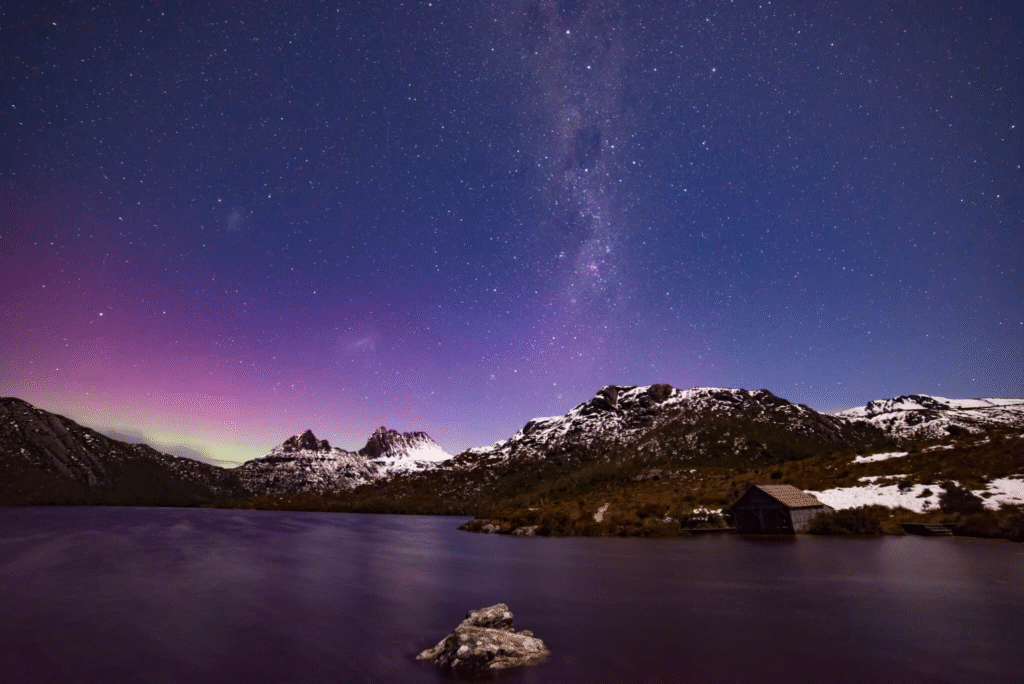
Tasmania’s wilderness areas are some of the darkest in Australia, and Cradle Mountain–Lake St Clair National Park is no exception. Known for its alpine beauty, this UNESCO World Heritage site offers pristine stargazing in Australia during cooler months.
The park’s elevation, cool air, and low humidity create ideal astrophotography settings. You might even glimpse the aurora australis, the southern lights, dancing on the horizon during periods of solar activity.
Why Choose Australia for Stargazing
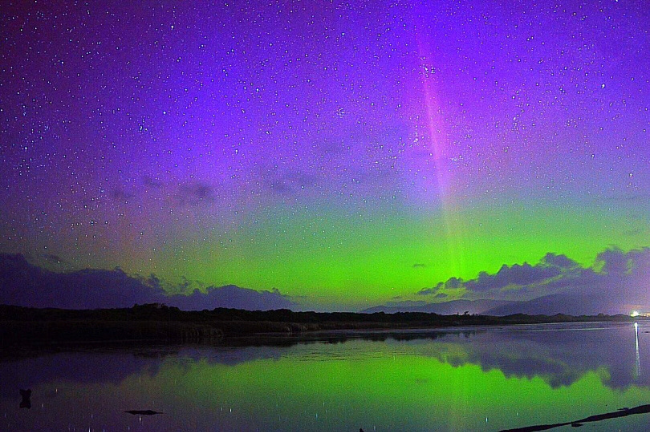
Few countries offer such a variety of stargazing Australia environments. From red deserts and salt lakes to coastal forests and alpine peaks, each region provides a unique celestial backdrop. Australia’s location in the Southern Hemisphere also grants access to constellations and phenomena not visible from the north, including the Southern Cross, Magellanic Clouds, and the brilliant Galactic Core.
Moreover, Australia’s commitment to preserving dark sky areas—like Warrumbungle—helps reduce light pollution, making it a sustainable destination for future stargazers. Whether you’re an amateur looking for a magical night or a seasoned astrophotographer chasing the perfect shot, stargazing in Australia in 2025 is a journey well worth taking.
Related Reading
- Unique Wildlife Experiences in Australia You Can’t Miss
- Best Hidden Beach Camping Spots in Australia
- Top Rainforest Hikes in Australia for Nature Lovers
FAQ
Q: What is the best time of year for stargazing in Australia?
A: The winter months (June to August) generally offer the clearest skies and lowest humidity, making them ideal for stargazing in Australia.
Q: Do I need special equipment to enjoy stargazing in Australia?
A: Not necessarily. A telescope or binoculars enhance the experience, but even the naked eye reveals a stunning night sky in many dark-sky locations.
Q: Can I see the aurora australis in Australia?
A: Yes, especially from Tasmania and southern parts of South Australia during periods of high solar activity. Check aurora forecasts before planning.
